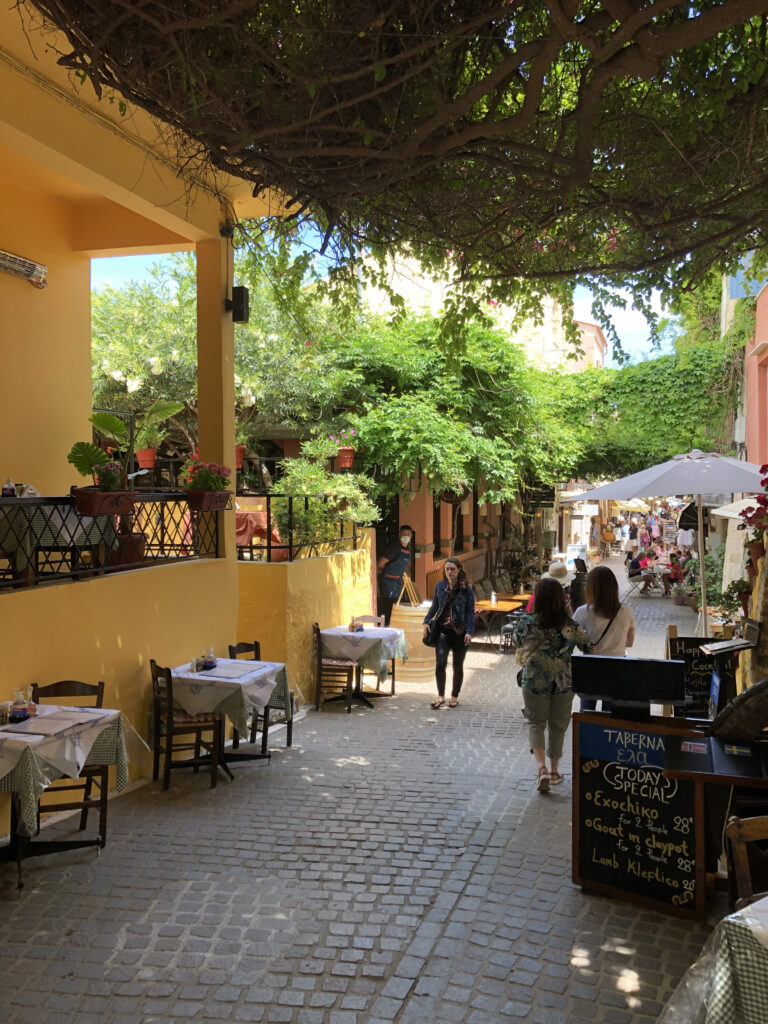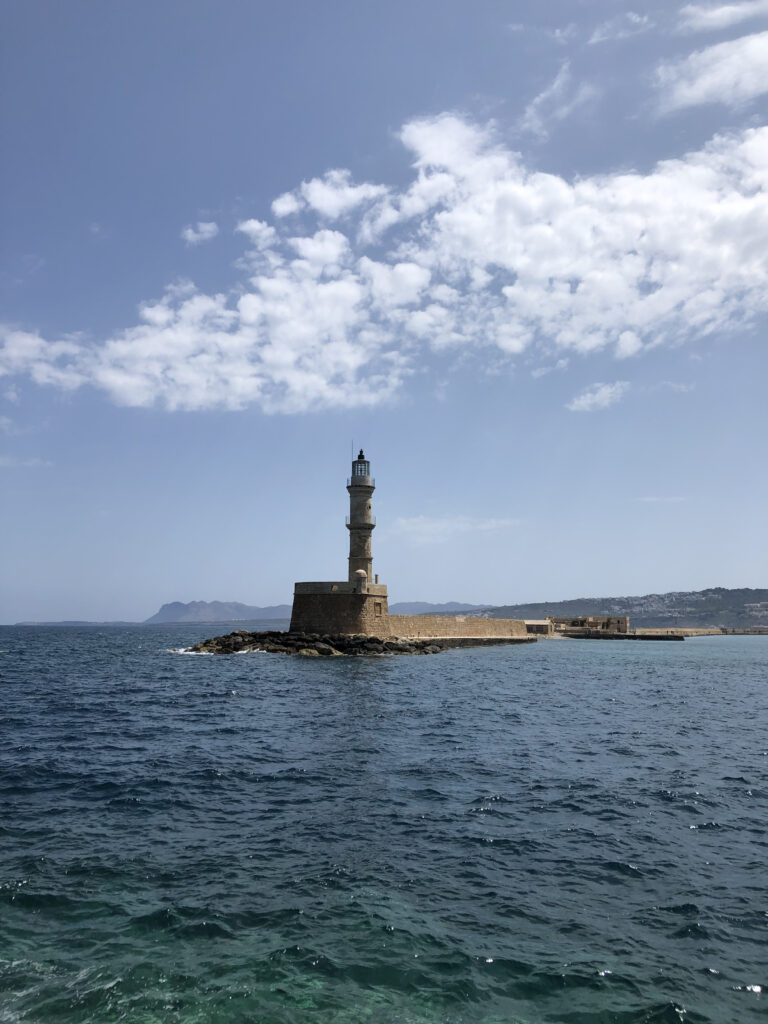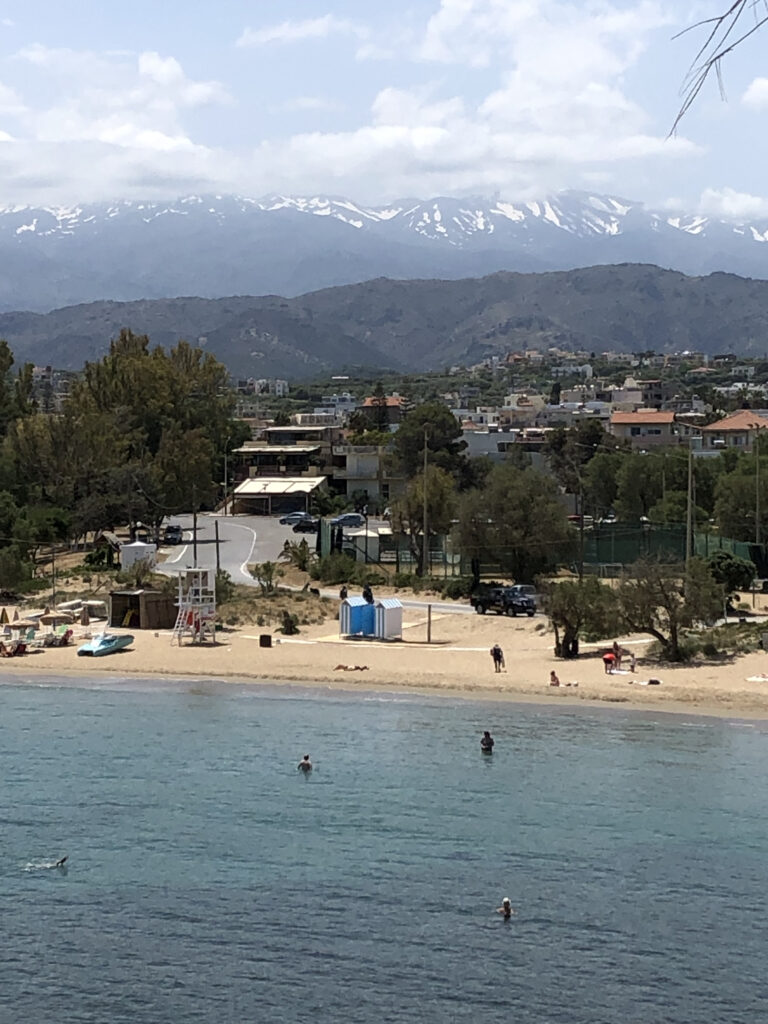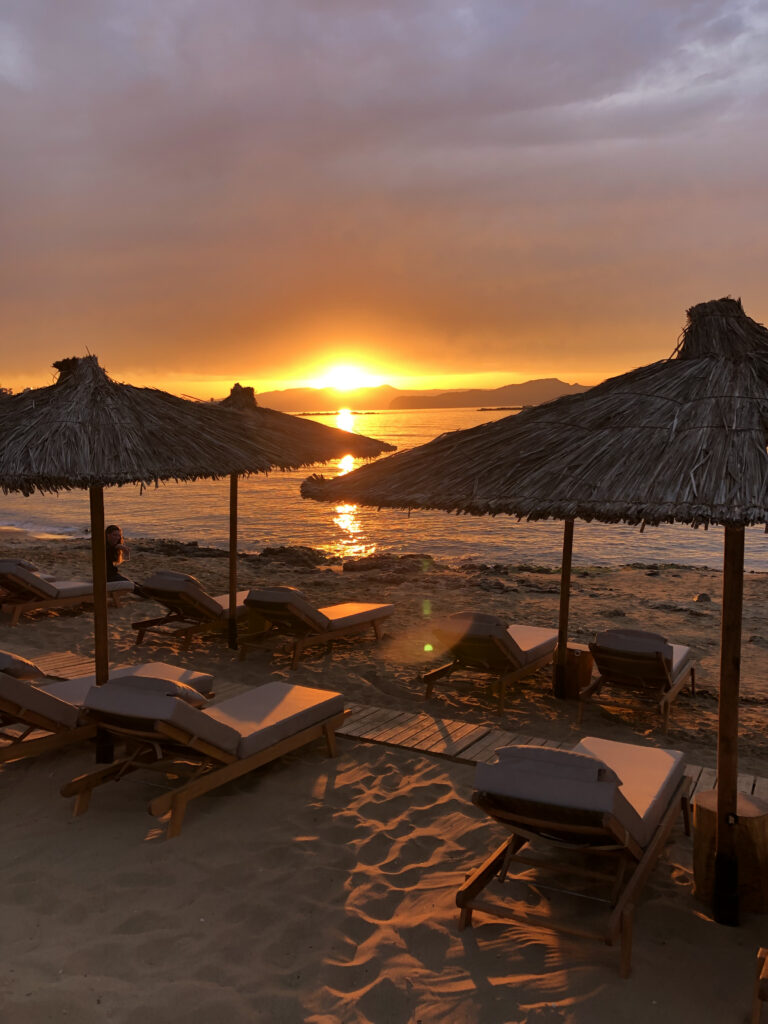First off, I should say that the heading to this blog is not alliterative. The town is pronounced something like ‘Hania’ – the ‘C’ is silent, as with so many of those places in Ukraine which begin with a ‘K’ but take their pronunciation from the second letter, ‘h’.

Chania is the second oldest town in Crete and undoubtedly one of the prettiest. The image of the harbour shown on the home page provides an emblematic example of this, the brightly coloured buildings being a legacy of the town’s development under Venetian rule. Its multicultural heritage is reflected by the fact that within about 200 yards of each other one can find a church, a mosque and a synagogue.

Crete formally became part of Greece in 1913. In common with many Mediterranean islands, Crete suffered under German occupation during the Second World War but with effect from the 1970s it has gradually become a significant tourist destination, a process which has effectively created two Chanias: the old town and the modern one. (Walking in one of the latter parts of town, my wife and I noted it was pretty obvious which part it was: at the outdoor bar tables, the only voices you heard were speaking Greek.) This where most of the natives live and work and while it may, perhaps inevitably, lack some of the charm of the old part, it is attractive in its own right.

The fortifications that divide the two sectors of the town are impressive, a testament to what the citizens of Chania had to do in the past to repel intruders. These days there is nothing more threatening than tourists, and while the north coast of Crete is gorgeous territory, this part of the island never felt over-crowded. At least not in May. There is one particularly eye-catching edifice: the municipal market, a covered area where local farm produce is sold each morning. Unluckily for us, our visit coincided during a period of reconstruction, meaning it was closed.

Of course, there is not just an ancient city to enjoy here. There’s the sea. Frankly, May is too early in the season for me (I much prefer September, after the waters have enjoyed a few months of sun) but the Oasis Beach, which runs between Chania and Kalamaki, is particularly splendid and on the weekend especially it was apparent how much the locals, notably the children, took so much pleasure from their surroundings. And no wonder.
